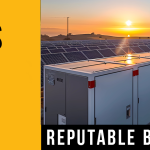 The residential solar industry is going through a pair of simultaneous changes that could alter the industry as we know it over the next decade.
The residential solar industry is going through a pair of simultaneous changes that could alter the industry as we know it over the next decade.
Over the past 18 months, it’s become clear that the long tail of solar installers is taking the industry back from a small number of large installers, driven by the shift from lease/PPA financing to cash and loan sales that are more equitable to small companies. And with national installers paring back on sales and marketing efforts, it’s hard to see them regaining share in the near future.
On the horizon, we can also see energy storage emerging as a product that will likely be paired with solar as time-of-use rates and demand charges become more common. With that in mind, GTM Research’s latest Energy Storage Monitor report predicts that residential energy storage will grow from almost nothing today to over 600 megawatts annually by 2021, most of it paired with solar.
So how will the energy storage business feed into the long tail of installers?
Pairing solar and energy storage isn’t as simple as it seems
One of the reasons long-tail installers can be successful in residential solar is because they’re installing fairly “dumb” components. Solar panels aren’t exactly smart devices, and while inverters and energy meters are more complex in their interaction with the grid, they’re reporting data about energy production more than dynamically controlling it.
Energy storage is a completely different beast. Whoever controls the energy storage system will need to be aware of time-of-use rates, demand charges and consumer preferences. Smart devices will also need to be taken into account, and all of this will need to be done at thousands of locations across multiple rate structures at different utilities. A battery paired with solar in the future will require an incredibly complex algorithm to operate efficiently, something that long-tail installers won’t be equipped to develop themselves. That means there’s a natural hole that energy storage companies will try to fill.
Everyone has their eyes on energy storage
This need to provide an energy storage solution to long-tail installers is a challenge everyone in the industry can see coming, and everyone wants a piece of the action. Solar panel manufacturer SunPower has been investing in energy storage for years and supported Tendril in part to invest in the data needed to operate energy storage systems efficiently. Tesla’s Powerwall 2 is the brains of its solar-plus-storage product and includes an inverter to make installation easier. And Sunrun has launched BrightBox in Hawaii and California. And those are just the national installers (or national network of dealers in SunPower’s case), which tend to view energy storage as a natural extension for their customers.





